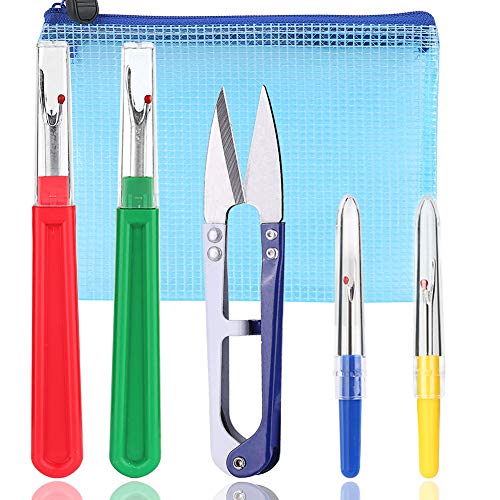Yes, a Seam Ripper Can Be Used on Delicate Fabrics
When it comes to sewing, mistakes happen. Whether you’re a beginner or a seasoned seamstress, it’s common to make errors that require you to remove stitches and start over. This is where a seam ripper comes in handy. But can a seam ripper be used on delicate fabrics? The answer is a resounding yes, as long as you approach the task with caution and follow a few simple guidelines.
Choose the Right Seam Ripper
Not all seam rippers are created equal, and some are better suited for delicate fabrics than others. When working with delicate fabrics such as silk or chiffon, it’s essential to choose a sharp, fine-pointed seam ripper. These types of seam rippers have a sharp blade that can easily glide through the stitches without causing damage to the fabric.
Additionally, look for a seam ripper that has a small, narrow handle. This will give you better control and precision when removing stitches from delicate fabrics. Avoid using seam rippers with large handles, as they may cause you to apply too much pressure and result in snags or tears in the fabric.
Use Light Pressure
When using a seam ripper on delicate fabrics, it’s crucial to use light pressure. Start by gently inserting the pointed tip of the seam ripper under the stitch you want to remove. Once you’ve secured the stitch, slowly and carefully glide the blade of the seam ripper through the stitches. Avoid pulling or tugging at the fabric, as this can lead to tears or stretching. Instead, let the sharp blade of the seam ripper do the work for you.
If you encounter a knot or a particularly stubborn stitch, take your time and work around it. Use the tip of the seam ripper to carefully pick at the knot or stitch until it loosens enough to be easily removed. Patience is key when working with delicate fabrics.
Protect the Fabric
While a seam ripper can be used on delicate fabrics, it’s essential to take steps to protect the fabric during the process. One way to do this is to place a layer of tissue paper or a thin fabric over the area you’re working on. This added layer will act as a barrier between the seam ripper and the delicate fabric, reducing the risk of accidental tears or snags.
Another way to protect the fabric is to use a pin to hold the fabric in place while you remove the stitches. This will prevent the fabric from shifting or stretching, ensuring that you can easily remove the stitches without causing damage.
Practice on Scrap Fabric
If you’re unsure of your skill or handling with a seam ripper on delicate fabrics, it’s always a good idea to practice on scrap fabric first. Choose a fabric that is similar in weight and delicacy to the fabric you’ll be working on. This will give you an opportunity to familiarize yourself with the process and gain confidence before tackling your project.
When practicing, pay attention to your technique and the amount of pressure you apply. Take note of any snags, tears, or excessive stretching, and adjust your approach accordingly. By practicing beforehand, you can ensure that you’re comfortable and confident in using a seam ripper on delicate fabrics.
While it may seem intimidating to use a seam ripper on delicate fabrics, it is indeed possible. By choosing the right seam ripper, using light pressure, protecting the fabric, and practicing on scrap fabric, you can confidently and successfully remove stitches without causing damage. So the next time you make a mistake while sewing, don’t be afraid to reach for your seam ripper, even if you’re working with delicate fabrics.






